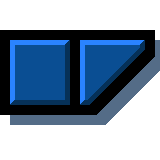
What is SAP Netweaver BW? SAP AG is a company in Germany that produces a suite of software applications targeted at various areas of business including data management, mobility, business processes. Within each of these areas of focus SAP AG as a company provides dedicated application suites with annual maintenance licensing to keep up to date. With this model comes the flexibility to pick and choose which parts of their overall suite of solutions you want to use.
“BW is an application focused on integrated
enterprise data warehousing and reporting”
One of the primary advantages is the flexibility of configuring and integrating these applications. Integration is one of the key reasons why enterprises end up putting more of their business processes into the SAP environment. SAP Netweaver Business Warehouse (SAP BW) is a data warehousing and reporting solution which is targeted at the collection, combining and consumption of data for the organisations internal business user community, customers and vendors.
There is a philosophy of ‘Using the right tool for the job’ which highlighted many unsatisfactory answers when it came to using the earlier built-in reporting capability within the SAP application suite. These built-in reporting solutions did some jobs well but they were isolated, had a high maintenance overhead and did not play well with each other. The ability to get the ‘Big Picture’ across the whole enterprise was not easy.
Performance for reporting was also a constant problem. Most of the applications provided are transactional in nature. They are all about getting the data into the system and processing it along the journey of the business process, as fast as possible. Over time that came to be known as an Online Transaction Processing System (OLTP).
One simple aspect of this meant that the programs were written for processing individual records of data where the record is considered ‘A transaction’. One way to think of it is, every time you go into a shop and make a purchase that sale is a transaction. As the easy of access to that data became more and more in demand, data warehousing tools that were focused on business intelligence rose in popularity.
This highlighted a fundamental shift away from data storage for transaction processing (Read/Write) over to data storage for reporting (Read-only). It ended up becoming known as Online Analytical Processing (OLAP) which essentially means its core philosophy, strategies and techniques were aimed at getting data out of the system, as fast as possible for consumption. Now OLTP and OLAP form different points of view on the same data. OLTP aims to get data into the system and through a business process while OLAP aims to get the data out for reporting.
Faster reporting involves a separate copy of the OLTP data and storing it in structures which are specifically optimised for reading. To have a duplicate copy of the data in the same system, effectively running side by side; both OLTP and OLAP have enough of a fundamental philosophical gap between them to require different hardware and software. This is why you end up with two separate servers. One running SAP ECC and the other running SAP Netweaver BW.
- What does your system landscape look like?
- What production systems exist and what is their primary focus?
